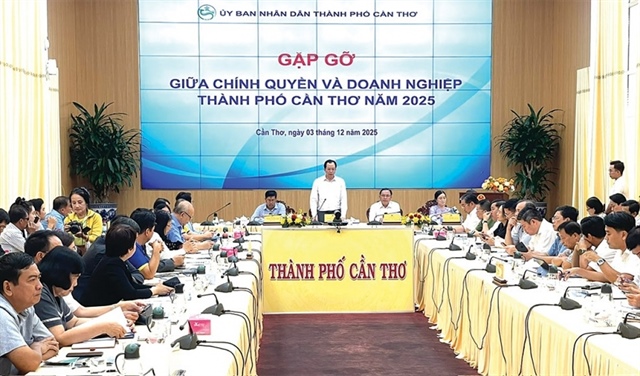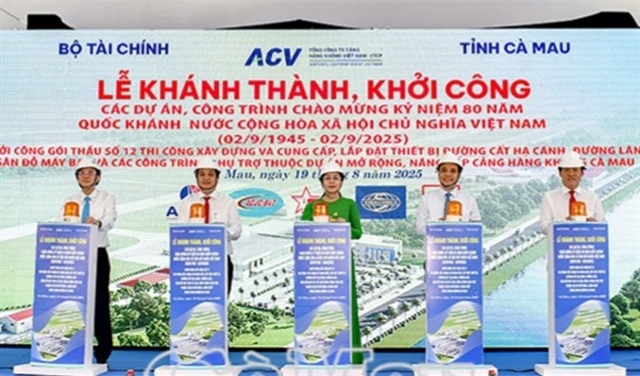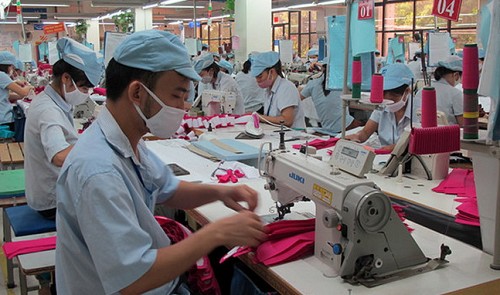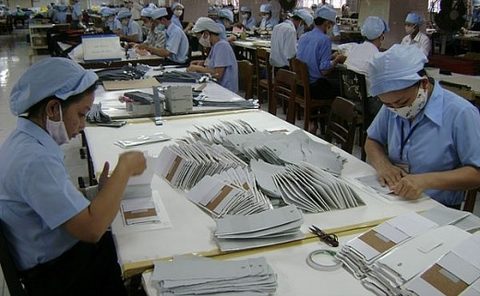Truong Hai cuts prices and profit target in anticipation of import spike
Truong Hai cuts prices and profit target in anticipation of import spike
Truong Hai, the biggest auto company in Vietnam, projected a sharply reduced profit in 2017, securing approval from the company's annual shareholders’ meeting in Ho Chi Minh City last week.

The company targeted a net profit of VND5.06 trillion ($222.6 million) for the year, a able 31 per cent drop from 2016 when its net profit grew 12 per cent since the previous year.
Explaining the low expectations, the company cited its plan to proactively cut prices in order to be more competitive, a new cycle of large-scale investments, and new businesses that have yet to produce profit. The company said that its strategy to cut prices had shrunk its profit margin from 15 per cent in 2015 to 11 in 2016.
It earned a first quarter net income of VND1.249 trillion ($54.9 million), accomplishing 25 per cent of the annual target. If business results stay at a similar rate for the next three quarters, the company's 2017 profit would indeed come close to the estimate.
Truong Hai said the price cut was planned in order to compete with a spike in car imports as a result of abolishing the tariff on completely build cars from the ASEAN at the beginning of 2018, as part of the ASEAN Trade in Goods Agreement. Vietnam's current import tax on cars is 30 per cent.
As previously reported by VIR, major auto companies recently started reducing the prices of their products. Truong Hai, for instance, lowered the prices of its Kia and Mazda models by VND20-140 million ($878 - $6159) each.
According to data by the General Department of Vietnam Customs, in the first three months of the year, Vietnam imported 26,500 completely built car units with the total value of $488 million, up 34.4 per cent on-year in number and 1 per cent in value.
Truong Hai predicted the 2017 market volume for small cars would fall by 7-10 per cent. It projected sales totalling 112,020 vehicles for the year, a minor increase from the 2016 volume of 110,548, and a stark contrast to the 37 per cent jump in sales from 2015 to 2016.
In comparison, the overall market grew at a slower rate of 23 per cent in 2016, compared to the 55 per cent in 2015, with a volume of over 342,000 cars after a year when Vietnam's 6.21 per cent GDP growth fell short of projections.
Truong Hai plans to make ambitious investments in 2017. The company plans to expand its Chu Lai-Truong Hai automotive complex in Quang Nam Province as well as its dealership chain.
For example, the company broke ground in March for an assembling factory in Chu Lai that is going to produce 100,000 Mazda units annually. This new factory is expected to begin operation in April 2018, with a capacity of 50,000 cars per year in the first phase. The investment will cost VND12 trillion ($520 million), according to Truong Hai's website.
Besides, as previously reported by VIR, the company will invest in the supporting industry, aiming to exceed the 40 per cent localisation rate of its car production and eventually export its products to other ASEAN member states. It will also manufacture agricultural equipment and take part in housing development and social infrastructure facilities, such as schools, to lure labour force to Chu Lai Economic Zone.
The company will also invest to expand the Chu Lai port and its logistics infrastructure to receive ships with a capacity over 30,000 tonnes, and provide sea and land transport services to reduce costs for investors in the economic zone.
Separately, Toyota Motor Vietnam, which holds the second biggest share of the car market (25.5 per cent), recently stopped building its Fortuner model in Vietnam and decided to import it from Indonesia instead. The company explained that it wanted to shift resources to raise the output of its four remaining models in Vietnam, the Corolla Altis, Innova, Vios, and Camry, thereby reducing cost per unit.
”With the current market volume and the number of models, assembling cars domestically can be costly,” said Toru Kinoshita, president of Toyota Motor Vietnam, as quoted by Bao Dau Tu (Investment), VIR's sister newspaper.
The company might halt the production of other models in the future and switch to import, he said. The Vietnamese car market is only one-fifth of the Thai market or one-sixth of the Indonesian market by volume, and with so many models, assembling cars in Vietnam is 20 per cent more expensive than in Thailand or Indonesia.
Some said that other auto companies in Vietnam that have smaller production capacities than Toyota will face similar pressure to switch from building to importing in order to cut costs, especially after the elimination of tariffs within the ASEAN bloc.





















